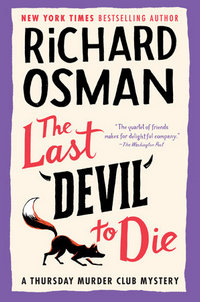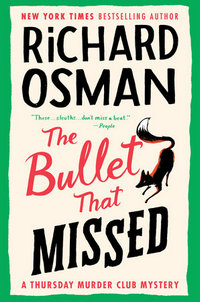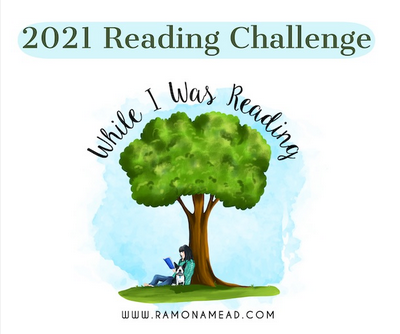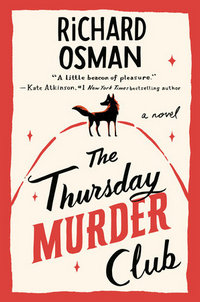I know I’ve been disorganized this year, but how did it take me so long to finish this? (I did start it the day after I closed it). Oh well, here it is anyway.
 The Last Devil to Die
The Last Devil to Die
DETAILS: Series: The Thursday Murder Club, #4 Publisher: Pamela Dorman Books Publication Date: September 19, 2023 Format: Hardcover Length: 422 pg. Read Date: September 28-29, 2023

… it might be nice for the Thursday Murder Club to have a new project that moved at a gentler pace than usual. Something a bit less murdery would be quite a novelty.
What’s The Last Devil to Die About?
What a nice thought—and for a minute, it looked possible.* But no reader expected it to continue, and it doesn’t. In fact, the murder strikes pretty close to home—a character the reader had met recently, but who had strong ties to Stephen and Elizabeth. Which, of course, is how the Thursday Murder Club gets involved. Since the reader does know him, though, we’re invested from the get-go.
* And I’d absolutely read that.
The Club encounters art forgery, a different group of drug smugglers, and some people who make others they’ve faced down seem downright cuddly. (not all of them, obviously, these retirees have faced off with some scary people) The path they have to follow to find the killer—and the object their friend died over—is probably the twistiest they’ve gone down yet.
Yes, there is the “less murdery” case as well—a fellow resident of Coopers Chase is getting fleeced by an online romantic interest, but he can’t see it. So the Club takes it upon themselves to expose the fraud to protect him before he’s totally broke (and maybe get a little of the money back).
Loss, Grief, and Death
Life continues, whatever you do. It’s a bulldozer like that.
This series has always featured death—not just murder. Given the age and health of the protagonists—and the community they live in—it’s a constant presence. But not just death, going on, grieving, learning to cope with the absence of a loved one—and maybe not learning.
We’ve watched Joyce, for example, grieving for her husband from Day 1. Everyone since that time has lost people that were important to them, talked about losing others, and so on. It’s one of the dominant themes of this series.
In The Last Devil to Die, dominant seems to be an understatement. Osman doesn’t let you get away from it—not in a mawkish, maudlin, or over-the-top manner. It’s just there, it’s what the characters are facing and dealing with in a variety of ways (even some of the bad guys!). It doesn’t leave you (too?) despondent, however. There’s hope, there’s life, there’s a tomorrow for the living. It is a bulldozer.
I’ve always been impressed with the way that Osman treats these subjects, he’s at his best in this installment.
So, all in all, I ’ve had a lovely Boxing Day, and am going to fall asleep in front of a Judi Dench film. All that’s missing is Gerry working his way through a tin of Quality Street and leaving the wrappers in the tin. Irritating at the time, but I’d give everything I own to have him back. Gerry liked the Strawberry Delights and Orange Crémes, and I liked the Toffee Pennies, and if you want to know the recipe for a happy marriage it is that.
So, what did I think about The Last Devil to Die?
That’s the thing about Coopers Chase. You’d imagine it was quiet and sedate, like a village pond on a summer’s day. But in truth it never stops moving, it’s always in motion. And that motion Is aging, and death, and love, and grief, and final snatched moments and opportunities grasped. The urgency of old age. There’s nothing that makes you feel more alive than the certainty of death.
This summer, when I did the Mid-Year Freak Out Book Tag, I said that while no book had made me cry this year, I figured something would by the end of the year. I didn’t think it would be a cozy mystery that did it. Almost twice.
But I was laughing—or at least chuckling—within a couple of pages both times. And it didn’t feel like emotional whiplash or like he was undercutting the seriousness of what elicited the tears or almost tears. Osman was just honestly portraying these characters in all their aspects which brings laughter and tears.
I’ve talked a lot about this book’s “downer” parts. Let me assure you that the comedy is great—watching Ron try to understand his son making Cameos, for example. Other things with Ron, too, actually. I’m having trouble coming up with examples—well, Joyce is a reliable source of humor, obviously. Everyone is, as you know if you’ve read one of these books (and if you haven’t, but are reading this post…there’s your homework, go pick up the first one and thank me later). I’m having trouble coming up with other specific examples that I can use in this post, sadly. But they’re there, I assure you.
As always, the characters are Osman’s strong suit. Our regulars are in fine form, as are the some returning characters (including some I was pleasantly surprised to see), and the new characters are great additions to the cast (however temporary some of them might be). They all practically jump off the page fully formed and it’s hard to ask for more.
The online fraud story goes pretty much like you expect it to—this isn’t a Mrs. Plansky’s Revenge kind of thing. But it was very satisfying. The murder mystery, which is theoretically why people pick this book up, on the other hand…I have mixed feelings about it. But I can’t explain that reaction. Osman knows how to construct a mystery, the red herrings are perfect, the suspects are wonderfully designed, and the reveals and wrap-up were done almost perfectly. I can’t think of a single problem with it. But the entire time I was reading it, something just didn’t click.
I want to stress that this is my only issue with the book—sadly, it’s the A story. Maybe it’s the fact that it didn’t feel like it always. Maybe it’s because everything else in the novel was so good and so emotionally strong, that the mystery couldn’t compete. Maybe the book was just too crowded with storylines and this one didn’t have as much time to develop as it needed? It’s also (very likely) just me. I also thought it was pretty easy to guess the killer’s identity—but the motive and the reveal were so well done that I didn’t care. Also, the herrings were red enough that I doubted my guess more than once.
That ineffable quibble aside, this is the best book in the series thus far. I couldn’t put it down—from the “are you kidding me?” beginning through the emotional body-blows over the course of the book, up to the strong conclusion, and all points in between, Osman kept me guessing, kept me invested, and kept me wondering how he could be so good at this.
I don’t need to tell fans to get this (they’ve probably all read it by now), but I can encourage new readers to catch up.

This post contains an affiliate link. If you purchase from it, I will get a small commission at no additional cost to you. As always, the opinions expressed are my own.
![]()








 Grab a book, any book.
Grab a book, any book.
